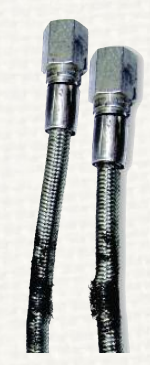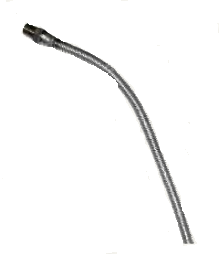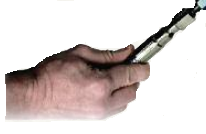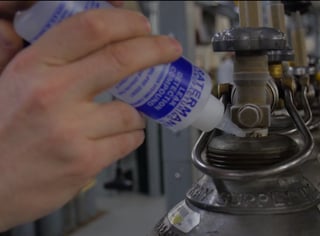Here are 5 signs to tell you it's time to replace your industrial gas hose:
- Discolorations:

Freckles, spotting, or other markings on an industrial gas hose indicate that foreign matter is coming into contact with the hose. Often, freckles occur from the use of a “leak check” solution. Typically, this is not a problem; however, it’s crucial that the solutions be mixed precisely to the manufacturer’s recommended proportions. If the proportions are not correct, braid damage can occur.
- Kinking:

A kink in the hose indicates over bending and/or over stressing. This is most often apparent on hoses connected to cylinders on a manifold. If the hose is what is keeping the cylinder from hitting the ground, the hose will eventually begin to kink; once it does, it should be replaced.
- Broken Braids:
The stainless braid on high-pressure hoses gives the inner core of the hose its power and ability to withstand pressure. So even if only a single broken braid on the hose is obvious, the hose still needs to be replaced. A broken braid equates to a potential problem.
- Bad Thread:

A bad thread on your fittings can lead to leaking when under pressure. Simply looking at the threads can reveal a lot. Analyze closely to make sure no metal shavings or cross treads are visible. If either is present, the hose unfortunately needs to be replaced. Thread gauges are another good way to ensure that the fittings remain within specification.
- Leaks:

Leak checking an industrial gas hose is fairly straightforward. Leak check is a liquid solution that is applied to the fitting ends on the hose while under pressure, in order to check for any sign of leakage, due to an improperly tightened or potentially worn or damaged thread. Any excess leak check solution should be wiped off after conducting the “leak check."
Click here to learn about our online hose builder




